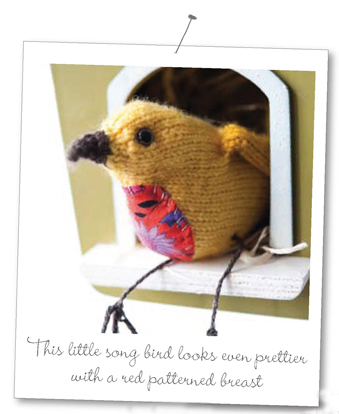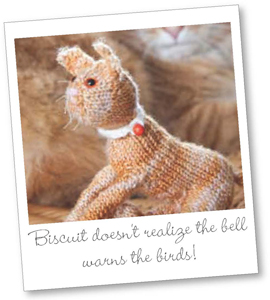Finishing touches
The smallest details can really bring your pets to life and give them their very own character. A small scrap of fabric will add colour and pattern, and simple embroidered features will create a most endearing face. All animals have different markings, like the white rabbit, so add your own finishing touches to create a bespoke pet. You can also give your pets accessories like Biscuit's crocheted collar.
EMBROIDERING DETAILS
Spend time making the facial features perfect and full of character. You can use any sewing stitches to create these features, although simple straight stitches are as effective as any. You can adapt them to make eyelashes for a pony, a mouth for a puppy, a nose for a kitten or eyes for any of the pets. You could use French knots to make the eyes on the smaller toys or claws for a tortoise. Choose what works best for you. Just remember, you need the stitches to look neat and be as firm as possible so that they don't undo.
STRAIGHT STITCH
This is the simplest of stitches. Thread a darning needle with the new colour of yarn and insert it from the back of the work to the front where you want the stitch to start. Take the yarn over at least a couple of knitted stitches and insert it back through the knitting where you want the stitch to end. Work as many stitches as you wish and then secure the ends at the back of the work. You can adapt these stitches endlessly, for example sewing them close together, on top of each other or splayed apart.
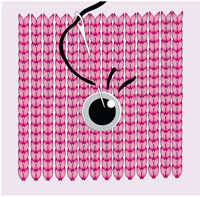
FRENCH KNOT
Bring the needle from the back to the front of the work and wind the yarn twice round the needle. Pull the needle through the twists, bringing the yarn through too. This creates the knot. You can twist the yarn round the needle more times if you want a bigger knot and once only for a smaller knot.
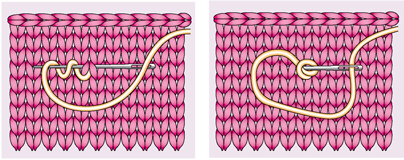
SWISS DARNING
This is a simple way of adding small areas of contrasting colour and forms duplicate stitches over the knitted stitches. Thread a darning needle with yarn and bring it up from the back of the work to the front through the middle of a knitted stitch where you want the contrast patch to be. Weave the contrasting thread to duplicate and cover the knitted stitch. Repeat, to cover as many knitted stitches as you wish. Secure the ends of yarn at the back of the contrasting patch.
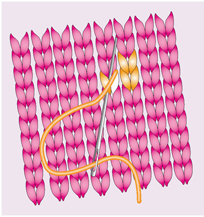
APPLIQUÉ
The Little Feathered Friends combine knitting with fabric appliqué and give the birds truly unique characters. You can add a touch of nostalgia by using treasured scraps of old fabric to really personalize your work.
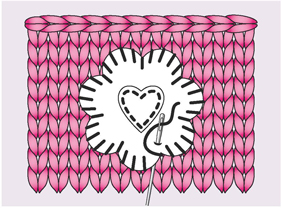
SEWING APLIQUE ON
There are several ways you can sew fabric details onto the knitting. I have simply used straight stitches to attach the edges of fabric to the knitting. Try to get your stitching as neat as possible and be creative with the colour of thread you use. The most important thing to ensure is that the fabric is sewn securely to the knitting. Use normal sewing thread rather than yarn.
CROCHET
Crochet is very handy for making collars, leads and reins for pets. You just need to make a chain, which is easy to do.
CROCHETING A CHAIN
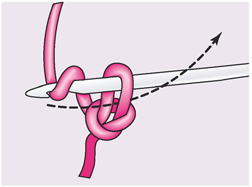
1 Tie a slipknot in the working end of the yarn and place the loop on your crochet hook. Wrap the yarn clockwise over the hook.
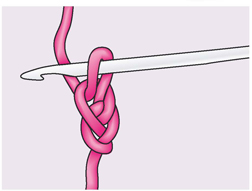
2 Pull the yarn through the loop on the hook to form a new loop. This is the first chain. Repeat the process until the chain is as long as you want it.
